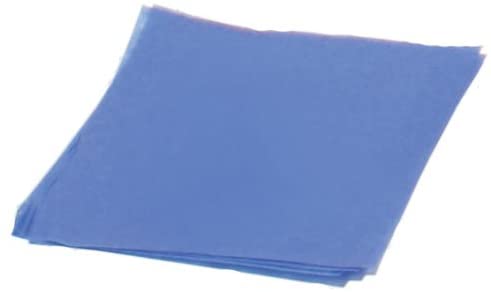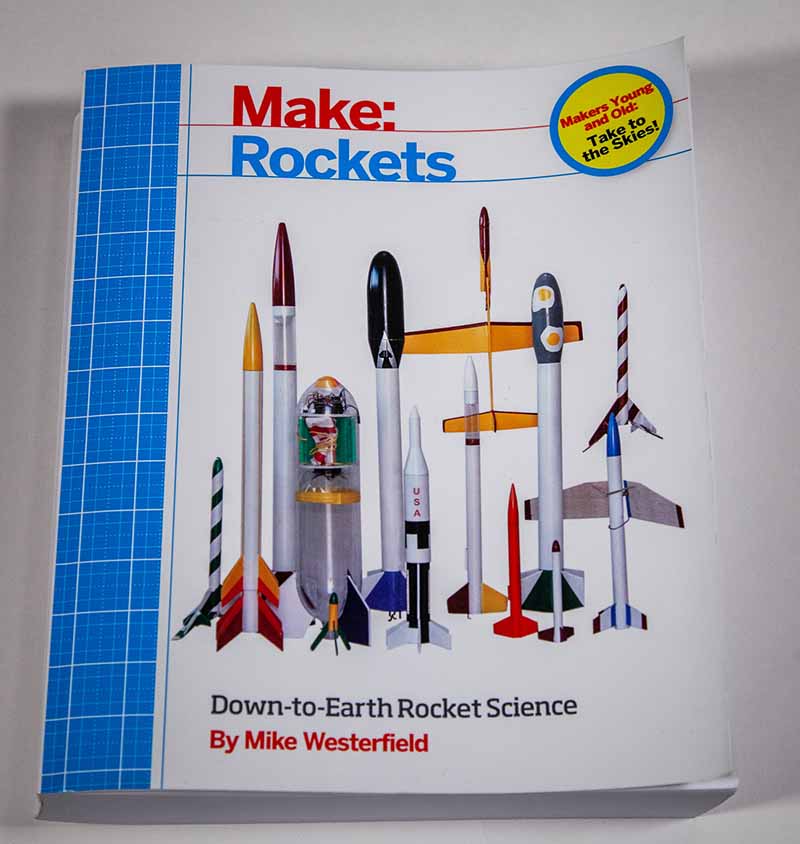
The day has come. You bought your rocket kit, got it all glued up, painted, and ready to go. You’re now an expert on rocket engines (mostly because you read all about them here), you bought fresh batteries for the rocket launcher, and you’re ready to walk out the door. Then you realize something important; you forgot about the recovery wadding.
Yes, this definitely has happened to me, and not just the first time I launched a rocket. This happened last week as I was taking my kids to the park to launch their first rockets (if this is my brain now, I’m in serious trouble when I get older…).
What is Recovery Wadding and Why Do You Need It?
Most low-powered rockets use black powder rocket engines to propel the rocket into the air. As you can see in the diagram below, a typical model rocket engine has a clay nozzle (to focus and direct the energy of the combusting propellant), propellent (the fuel for launching your rocket), a delay (this is the last number in the rocket code. Learn more about rocket engines here), and then the ejection charge.
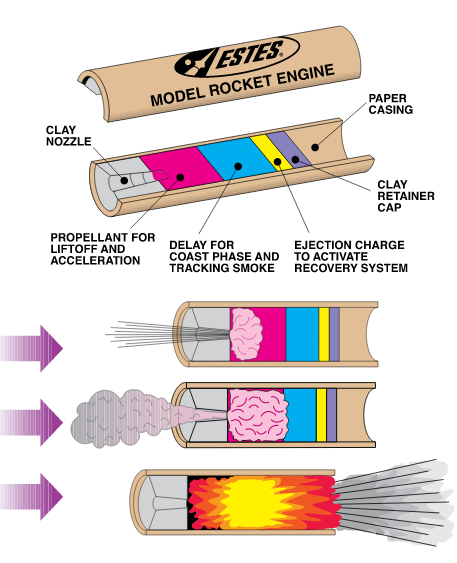
The ejection charge releases hot gasses that push the nose cone and attached recovery system from the tip of the rocket. The combustion of the ejection charge and the hot gasses are enough to melt the plastic of the parachute/streamer and other components of the recovery system.
Recovery wadding is a lightweight material that is treated with a flame-resistant chemical. It serves as a barrier between the hot gasses released by the ejection charge and the recovery system and nose cone. It is light-weight enough not to have a significant effect on the weight of the rocket and can easily be pushed out of the rocket when the ejection charge ignites.
How to Install Recovery Wadding in a Model Rocket
Generally, you want to insert a couple sheets of wadding into the rocket, between the recovery system and engine, before putting on the nose cone. For thinner diameter rockets (13mm), 1-2 sheets should be fine. For most standard sized rockets (around 18mm) 3 sheets should do it. Anything wider might need an extra sheet.
Wad up a sheet and insert it into the launch tube one sheet at a time. You may need a pencil to stuff the wadding deep enough. You want to be careful not to pack it too tightly, but not so lightly either.
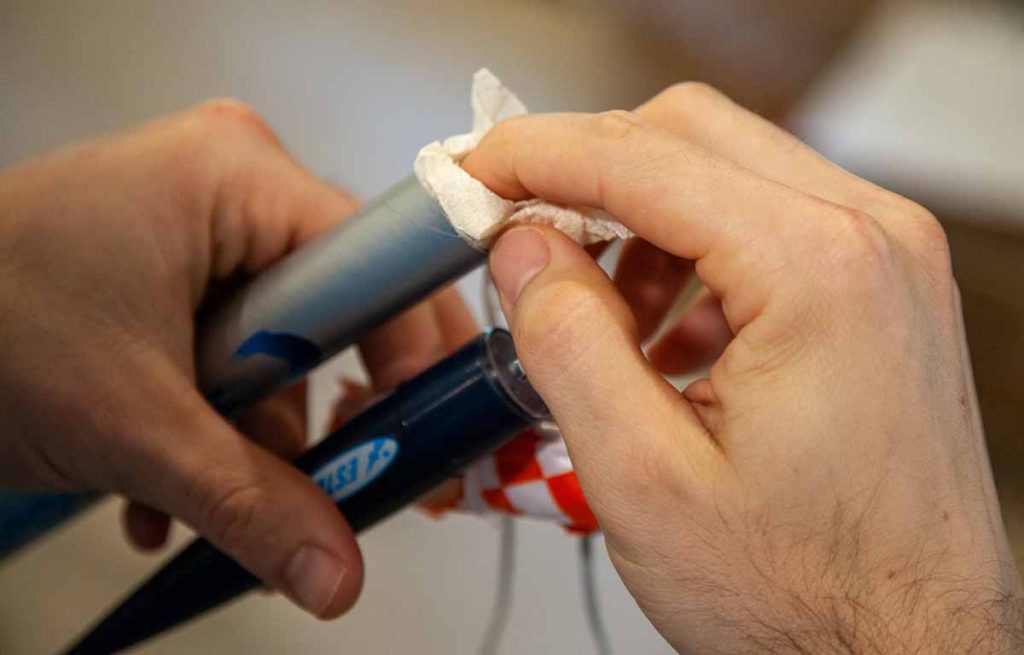
Recovery Wadding Options
Manufactured Recovery Wadding Options:
There are a couple options of recovery wadding on the market, all pretty cheap (usually costing around $.10 a sheet). Estes makes one of the most commonly used wadding and is usually around $6-8 for a pack of 75 (that will last for around 25 launches)
Another company to keep your eyes on if you’re going to get more into rocketry is Quest Aerospace. They make their own recovery wadding (but blue!). They sell them in packs of 100 for around $10 (the individual price per sheet between Estes and Quest is about the same and they both work the same).
There are even some generic options on Amazon. I personally have not used them but making wadding is hardly rocket science (I crack myself up…) so it should all work the same. When I last checked, it was running for about $15 for a pack of 120, so definitely more per sheet than Estes and Quest. (Check out the current price on Amazon here)
All of these options will work fine. I recommend you find the one that’s cheapest and available and get that.
Cellulose Insulation for Recovery Wadding
Another option for recovery wadding is often referred to as “dog barf”. This is cellulose (not fiberglass) blown insulation that you can find at Home Depot or Lowes. It’s made of recycled newspaper that been treated with fire retardants and has a Class 1 fire rating.

The amount you get for your money is huge. A bag usually costs about $15 and will last you forever. If you plan to fly a lot or plan to fly with a group of people, this is a good option for you. If you plan to launch rockets once or twice, you may think about another wadding option.
I’m cheap too, and while the bang for your buck is pretty awesome, do you really want a mostly full bag of cellulose insulation sitting in your garage? That being said, if you’re in a pinch and you know you have some of this stuff in your attic, poaching a handful isn’t really going to affect your heating bill.
In fact (and this idea is coming to me as I type this), you may even consider getting a bag of insulation, keeping a handful in a zip-top bag, and then spreading the rest in your attic for some extra insulation. Then when you need more, just pop up to the attic and take some (I know what I’m doing this afternoon!).
How to Make Your Own Recovery Wadding
If you’re really in a pinch or maybe you just like making things yourself because you know it’s going to be cheaper that way (finger pointing at myself. Have I mentioned that I’m cheap?), you can make your own recovery wadding.
Recovery Wadding Recipe:
Mix 1 teaspoon to ¼ cup of water and mix until it’s dissolved.

Soak one sheet of paper towel (you can also use toilet paper, but I find it super hard to handle when it’s wet) in the baking soda/water mixture. Narrower sheets of paper towels are a perfect size, but a normal full-size sheet works too (you’ll just have some extra cutting later).
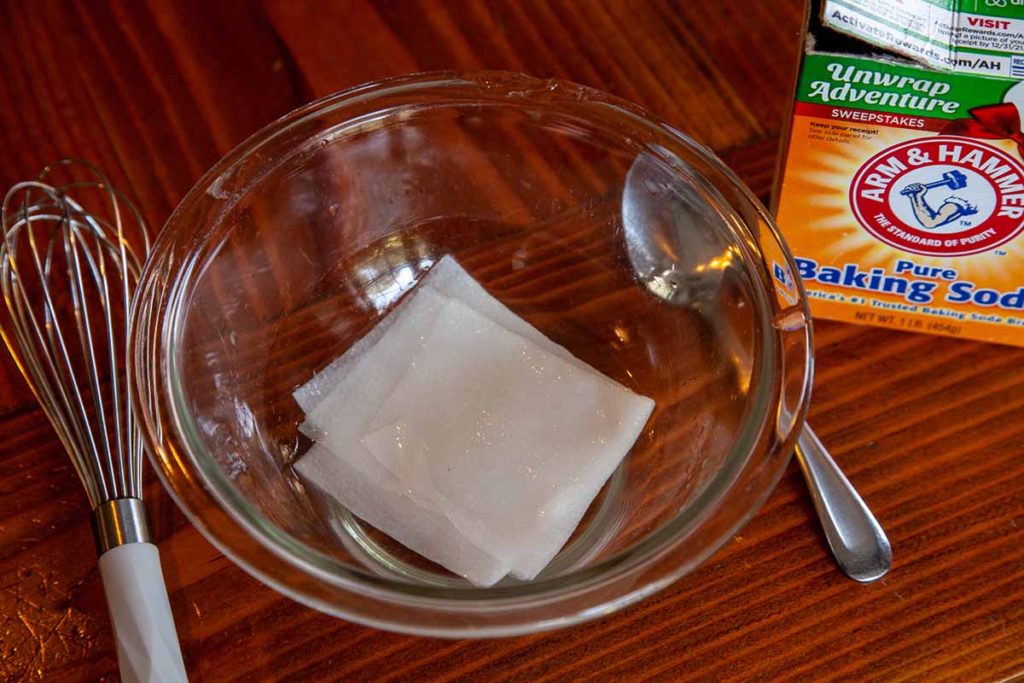
Hang to air dry overnight or put it in a 200 degree for 10-15 minutes to dry out.
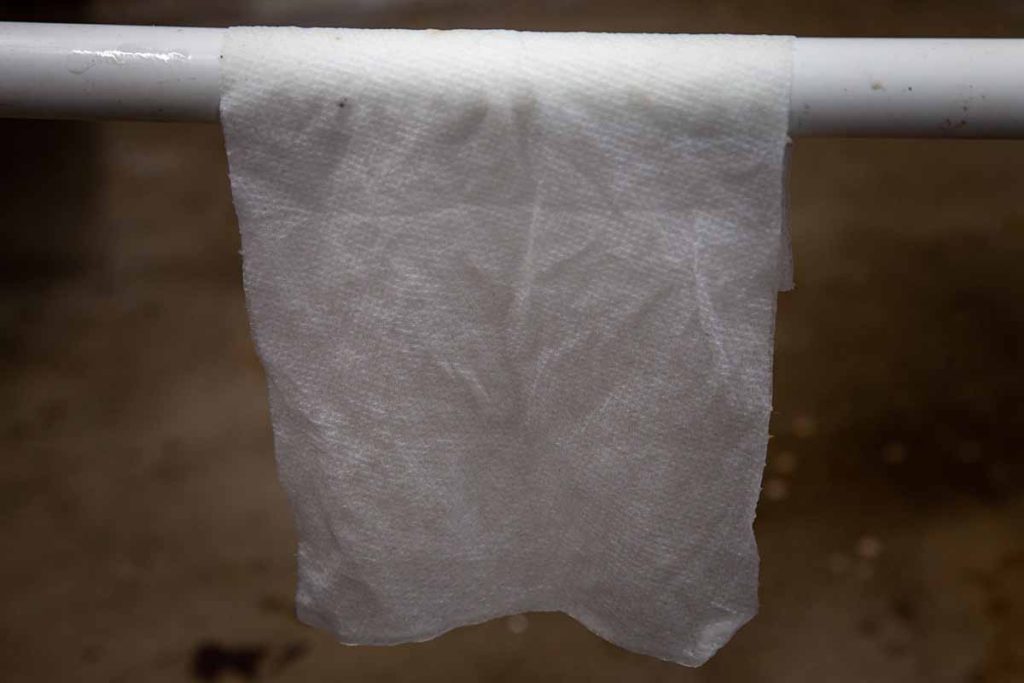
Most paper towels are 2-ply, so once it’s dry, pull the two sheets apart.
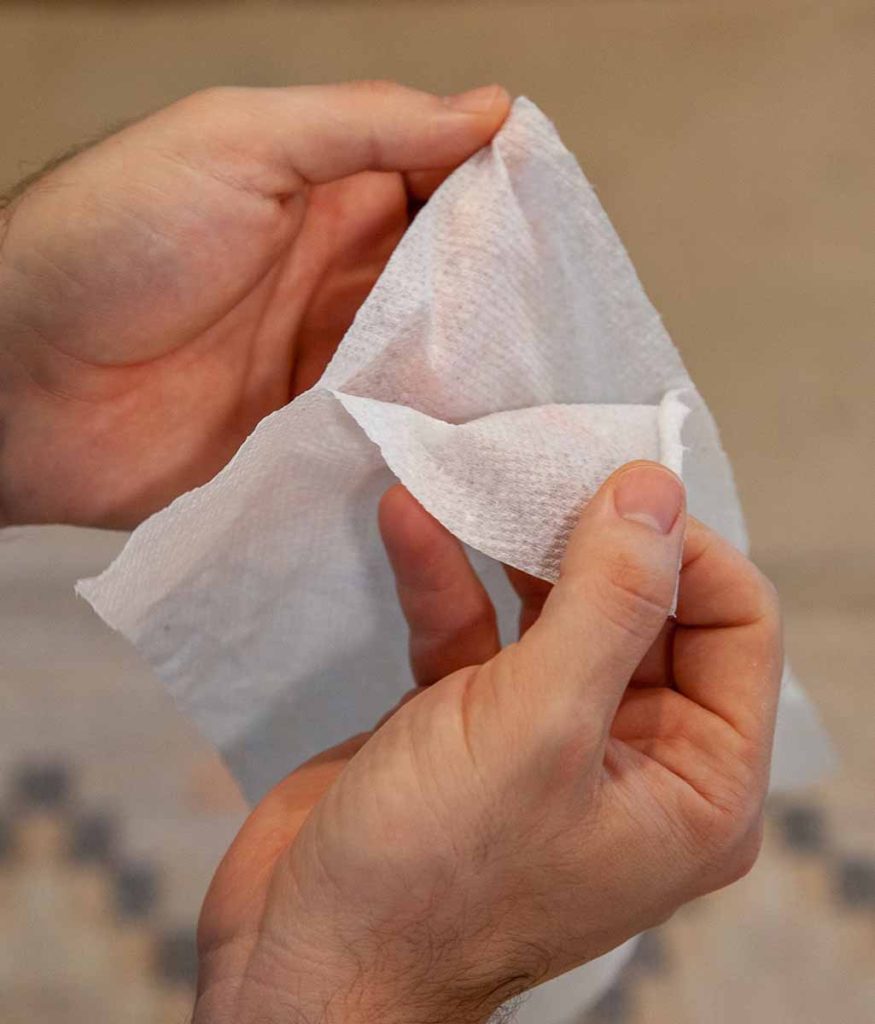
Cut the paper towels in half (or quarters if you have a full-sized paper towel sheet).
<insert photo of my cutting the paper towel in half>
Store in a zip-top bag and you’re ready to launch! The DIY stuff is surprisingly flame resistant and holds up really well compared to the manufactured suff. In fact, here are some photos comparing the store-bought stuff, cellulose, and the DIY stuff under an open flame.
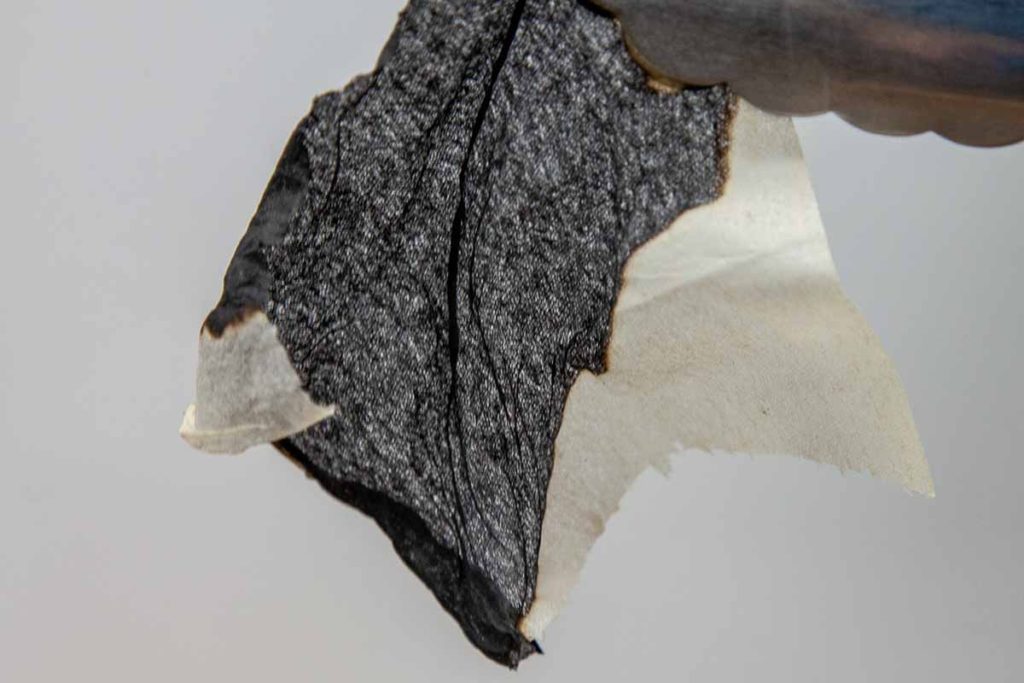
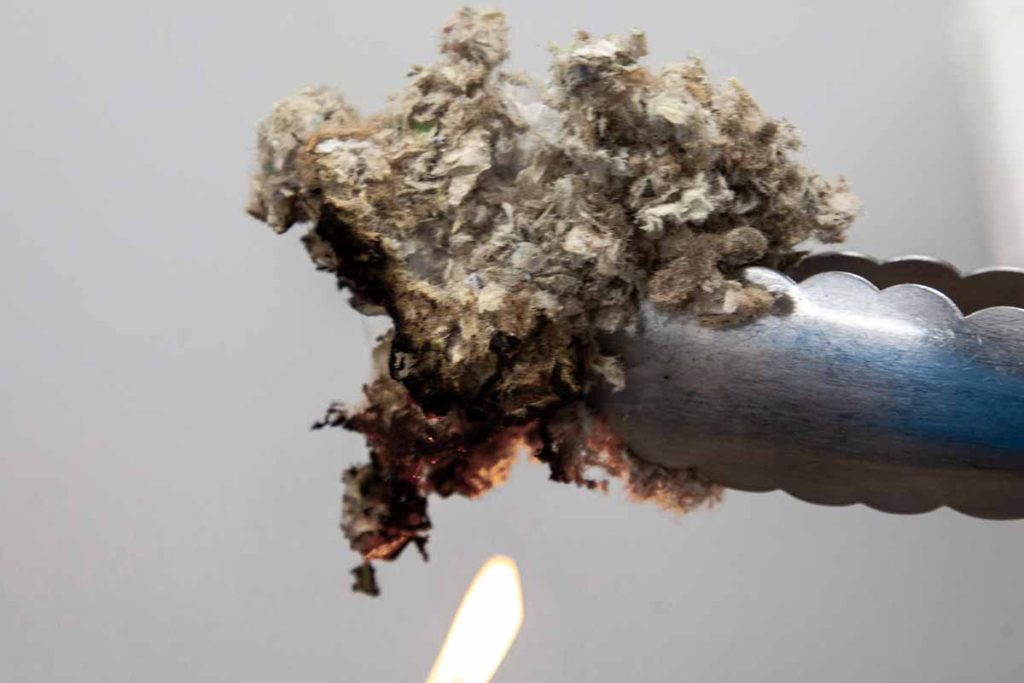
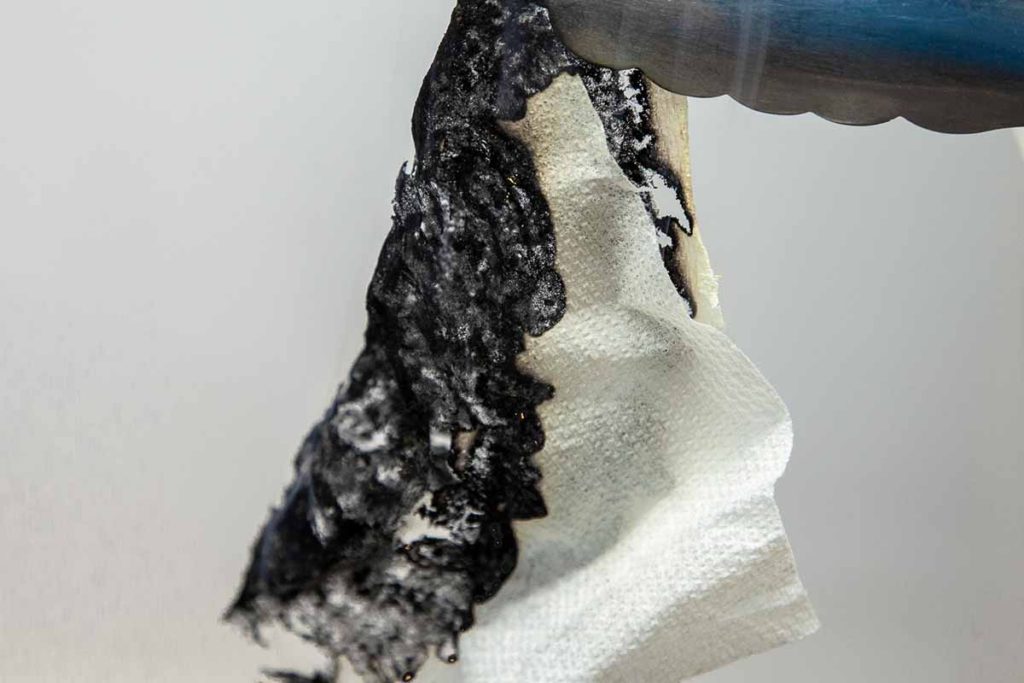
Diving Deeper into Model Rocketry
If you find yourself getting seriously into rocketry and you want to learn more, check out Make: Rockets by Mike Westerfield. Make is an awesome resource for so many things STEM-related and this book will give you everything you need to know about low-powered rocketry including compressed air and water rockets.
This book is no-joke and is about 1½ inches thick. This book has become my rocket bible and is a great resource (and no, Make did not ask me to say any of this).
Recent Posts
Flying rockets is super fun. My kids and I have a blast launching them into the sky and chasing them down. We love the idea of putting in a stronger engine each time and seeing how high we can...
Model Rocket Engines: Choosing the Right One for Your Rocket
One of my favorite childhood memories was building and launching model rockets. There’s something so cool about the idea that I can take some basic materials (mostly paper-based), glue it together,...


